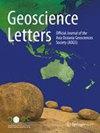受层序地层学影响的沉积演化模式:中国渤海湾盆地南浦大沙格案例研究
IF 4.3
3区 地球科学
Q1 GEOSCIENCES, MULTIDISCIPLINARY
引用次数: 0
摘要
识别和描述沉积演化模式对于评估源岩和储层岩石的分布至关重要,而源岩和储层岩石是油气勘探的基础。这项研究分析了地层序列、岩性特征、沉积岩相、单井沉积序列和地震反射特性。分析揭示了六个四阶序列,包括进阶序列和退阶序列,表明了水位的变化。南浦下陷始新统沙河街地层第三系(Es32+3)第二和第三亚系的沉积物来源被确定为白格庄隆起和溪南庄隆起。砂岩主要为石质芒硝岩和长石岩,两者的成分和构造成熟度均较低。值得注意的是,有 22 个岩性和 8 个岩性组合表明存在扇三角洲过程。这项研究确定了三种基本的地震反射包反射类型。这些岩相组合、沉积序列和地震反射是确定沉积环境的关键指标。沉积面分析结果表明,Es32+3地层发育扇三角洲沉积,受沉积演化模式序列的控制。这些扇三角洲沉积形成油气藏的潜力巨大。因此,精确描述沉积演化模式对于全面了解盆地动力学和油气潜力至关重要。本文章由计算机程序翻译,如有差异,请以英文原文为准。
Sedimentary evolution pattern influenced by sequence stratigraphy: a case study of the Nanpu Sag, Bohai Bay Basin, China
Identifying and characterizing sedimentary evolution patterns are crucial for assessing the distributions of source and reservoir rocks, which are fundamental to hydrocarbon exploration. This study analyzed the stratigraphic sequence, lithological characteristics, sedimentary lithofacies, individual well sedimentary sequences, and seismic reflection properties. The analysis revealed six fourth-order sequences, including progradational and regressive sequences, indicative of water level changes. The sediment sources for the second and third sub-members of the Eocene Shahejie Formation's third member (Es32+3) in the Nanpu Sag were identified as the Baigezhuang and Xinanzhuang Uplifts. Predominantly, the sandstones are lithic arkose and feldspathic litharenite, both of which exhibit low compositional and structural maturity. Notably, 22 lithofacies and 8 lithofacies associations suggest fan delta processes. This study identified three fundamental seismic reflection package reflection types. These lithofacies associations, sedimentary sequences, and seismic reflections serve as critical indicators for determining sedimentary environments. The results from the sedimentary facies analysis indicate that the Es32+3 Formation developed fan delta deposits, controlled by the sequence of the sedimentary evolution pattern. The potential of these fan delta sediments to form oil and gas reservoirs is significant. Therefore, precise characterization of the sedimentary evolution pattern is essential for a comprehensive understanding of basin dynamics and hydrocarbon potential.
求助全文
通过发布文献求助,成功后即可免费获取论文全文。
去求助
来源期刊

Geoscience Letters
Earth and Planetary Sciences-General Earth and Planetary Sciences
CiteScore
4.90
自引率
2.50%
发文量
42
审稿时长
25 weeks
期刊介绍:
Geoscience Letters is the official journal of the Asia Oceania Geosciences Society, and a fully open access journal published under the SpringerOpen brand. The journal publishes original, innovative and timely research letter articles and concise reviews on studies of the Earth and its environment, the planetary and space sciences. Contributions reflect the eight scientific sections of the AOGS: Atmospheric Sciences, Biogeosciences, Hydrological Sciences, Interdisciplinary Geosciences, Ocean Sciences, Planetary Sciences, Solar and Terrestrial Sciences, and Solid Earth Sciences. Geoscience Letters focuses on cutting-edge fundamental and applied research in the broad field of the geosciences, including the applications of geoscience research to societal problems. This journal is Open Access, providing rapid electronic publication of high-quality, peer-reviewed scientific contributions.
 求助内容:
求助内容: 应助结果提醒方式:
应助结果提醒方式:


